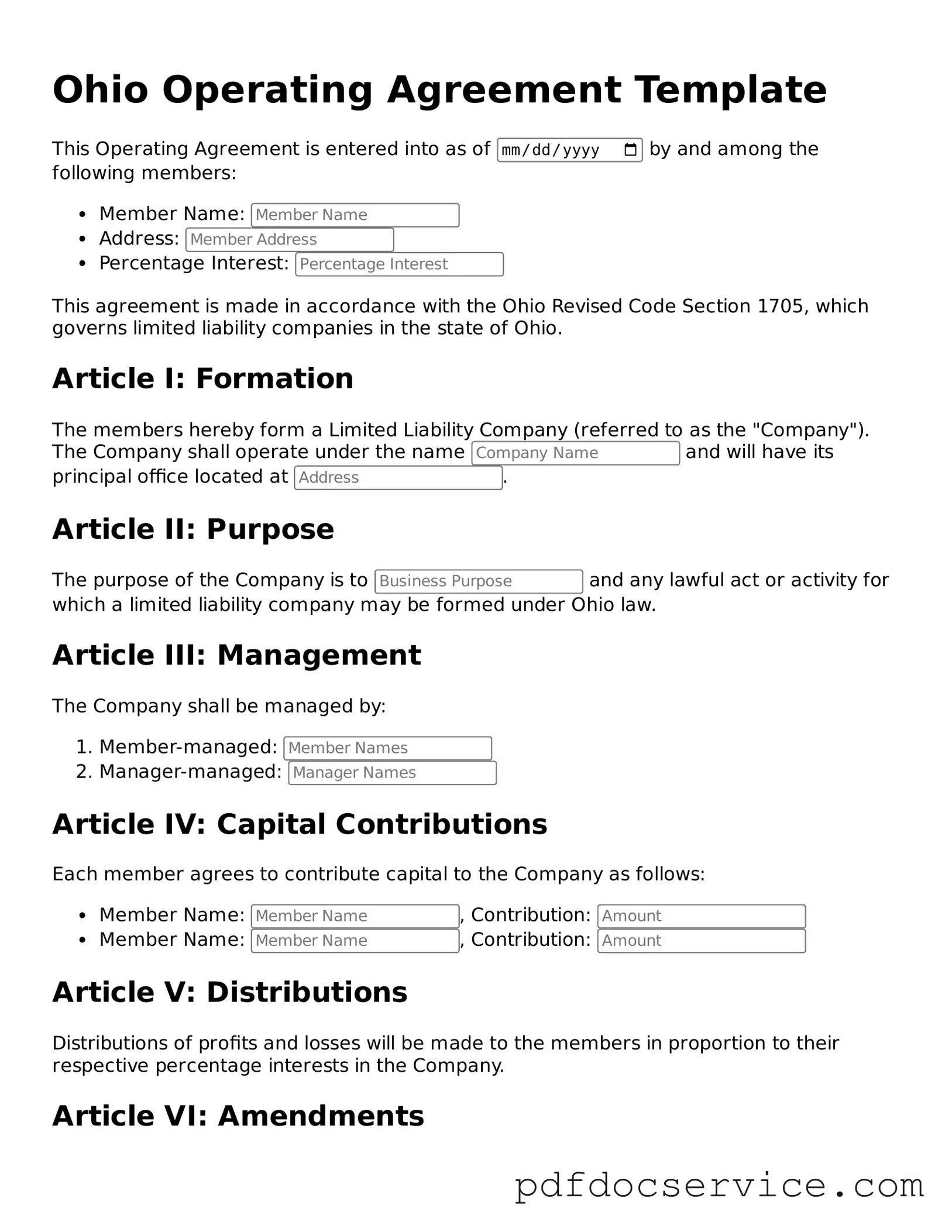Printable Operating Agreement Template for Ohio
The Ohio Operating Agreement form is a crucial document that outlines the management structure and operational guidelines for a limited liability company (LLC) in Ohio. It serves as a roadmap for members, detailing their rights, responsibilities, and the procedures for decision-making. By having a clear agreement in place, LLC members can help prevent misunderstandings and disputes in the future.
Open Operating Agreement Editor
